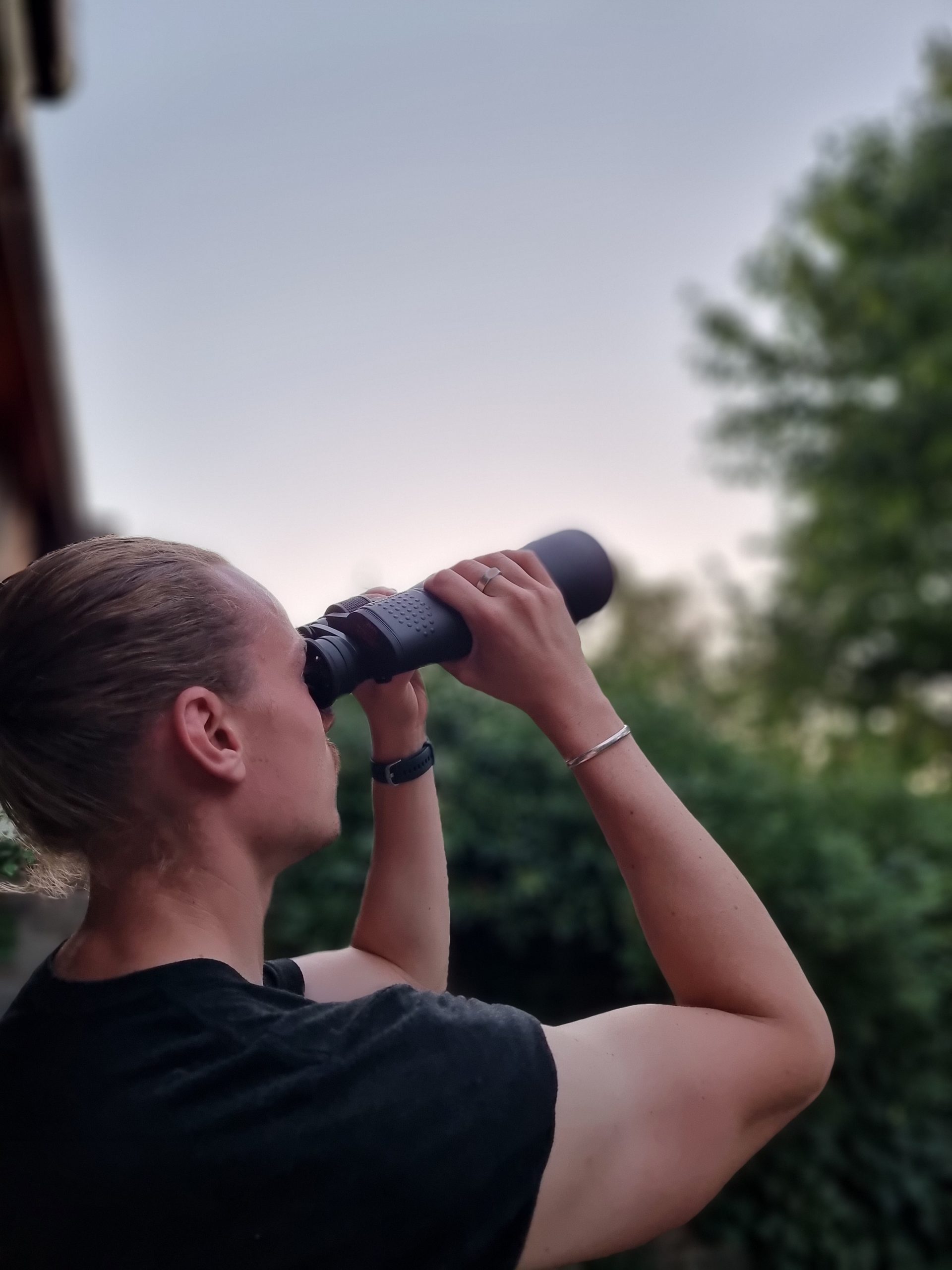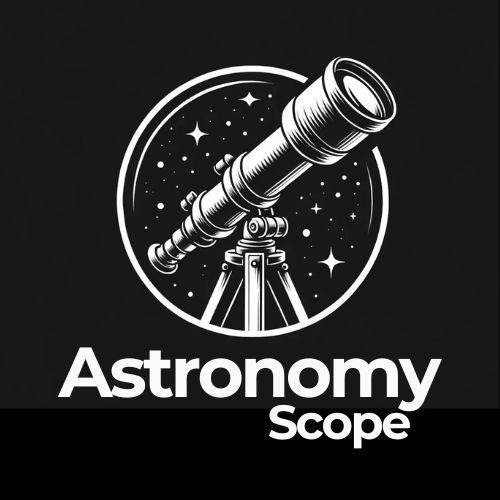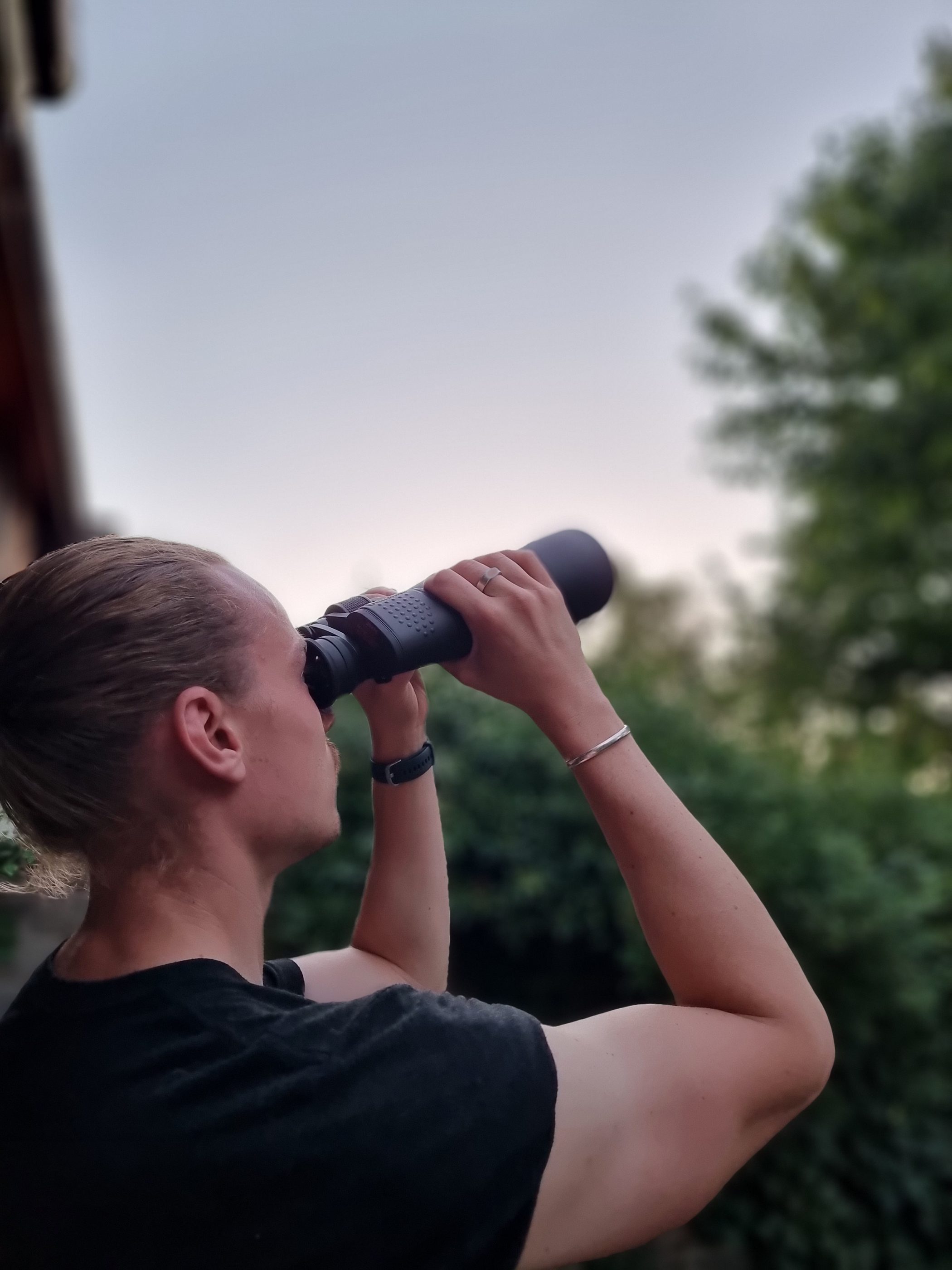Seen somebody using a handheld telescope but not sure what it is, or how to refer to it? Wondering what the correct terminology is? Well here is all you likely want to know.
So, what is a handheld telescope called? A handheld telescope is called a monocular. This is a modified refracting telescope that magnifies the images of distant objects with one eye. It resembles the half of a pair of binoculars.
But why would you even bother with a monocular over a pair of binoculars, let’s take a look.
What Is A Minocular Used For?
A monocular is used for quick, simple, versatile land-viewing. They are highly popular among hikers, bird-watchers, scenery observations and patrolling.
This is because they are highly compact and very lightweight versions of telescopes.
In fact, they are much easier to carry and significantly less expensive.
They are in many ways like binoculars, but if you can imagine that binoculars are essentially just two monoculars packed together.
Where binoculars enable you to use both eyes, monoculars enable you to only use one.
Therefore, monoculars will only produce one 2-dimensional image, while binoculars produce two parallaxed images which do provide greater depth perception.
How Far Can You See With A Monocular?
How far you can see with a monocular depends primarily on the optics it carries. Just like telescopes and binoculars, a monoculars power is defined by the magnification and objective lens diameter.
For instance, you will often see monoculars advertised with two numbers “12×50” is an example.
12 is the magnification power, whereas 50 is in reference to the diameter of the objective lens.
Both are crucial for defining what you can and cannot see.
A 12x magnification, for example, will make a distant object appear 50x larger than with the naked eye alone.
As you can imagine, more magnification will provide larger images and vice versa.
The objective lens diameter on the other hand is essentially how much light the monocular can collect.
And with more light brings more objects into focus.
So ultimately, what you can see with a monocular depends on the one you get.
Although, these devices are almost always used for land-viewing.
- 10x magnification and 36mm objectives lens, the Solo Monocular is a small, lightweight optic with fully multi-coated lenses, increasing the light transmission and resolution giving you the clear, crisp images you want.
- The monocular is fully rubber armored providing a non-slip grip to the user and making it extremely durable.
- Nitrogen purged and o-ring sealed, the Solo delivers waterproof and fogproof performance in any environment.
- The adjustable eyecup allows for comfortable viewing with or without glasses. The 36mm Solo comes with a versatile, multi-position utility clip for quick attachment to your equipment or clothing.
- Backed by our unlimited, unconditional, lifetime, VIP Warranty. A fully transferable promise to repair or replace your item if it becomes damaged/defective. Does not cover loss, theft, deliberate damage or cosmetic damage that doesn't hinder performance.
Finally
Handheld telescopes are known as monoculars.
Mono as in ‘one’, ‘only’ or single’.
And while they are different from binoculars and telescopes, they are incredibly simple to use, require no setup and are inexpensive and resourceful in comparison too.
If you are looking to purchase one, then check out my best handheld telescope buyers guide.
You’ll be pleased you did, believe me!

Hey, my name is Jeremy. I’m a passionate and seasoned astronomer who loves nothing more than observing the night sky. I also love researching, learning, and writing all things Space and the Universe. I created Astronomy Scope to share my knowledge, experience, suggestions, and recommendations of what I have learned along the way while helping anyone to get into and maximize their enjoyment of the hobby.


